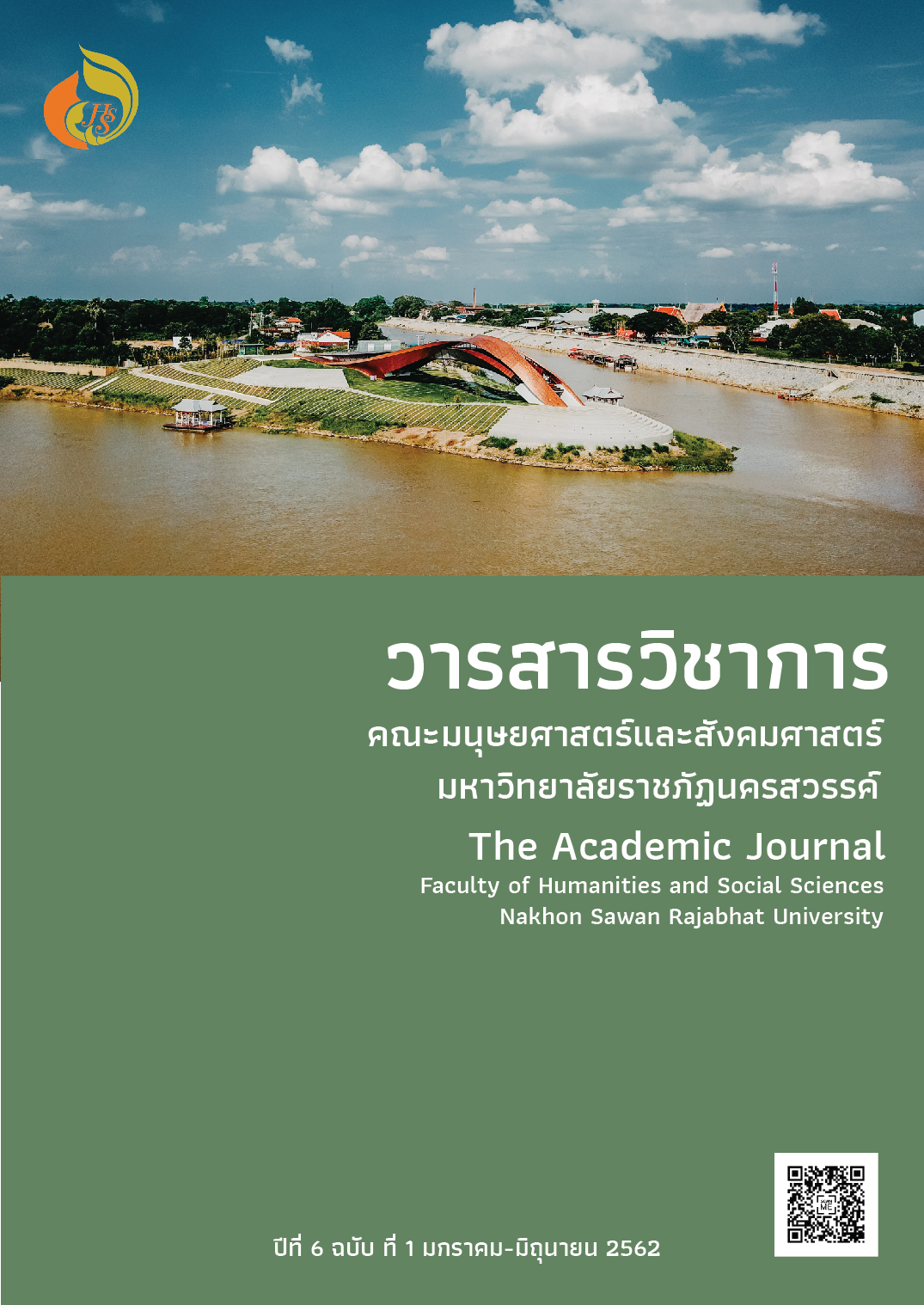Novel Metaphors : Creativity in Thai Entertainment News
Main Article Content
Abstract
News language is a register which is completely different from other registers, especially entertainment news. The entertainment news reports events of people in entertainment business. Although this kind of news is popular among a wide range of readers, a reporter is required to use a variety of language techniques to attract readers’ interest. One tactic found was using the metaphor. This research aimed to study the Novel Metaphors in Thai Entertainment News. The data was collected from 12copies of TV Pool magazines, from January to March 2017. The results showed that many Novel Metaphors have been found in Thai Entertainment News. In addition, there is a combination of concepts between the source domain and the target domain which corresponds to what Han (2011)mentioned ‘metaphors using in the news was provocative’. As a result, a number of metaphors have been found in the news, especially the news on ‘novel metaphor’ that is new creation or the new metaphors (which is) created from the existing ones.
Article Details
References
ศาสตร์ จุฬาลงกรณ์มหาวิทยาลัย.
จิตติมา จารยะพันธ์. (2539). อุปลักษณ์สงครามในข่าวกีฬาในหนังสือพิมพ์ภาษาไทย. วิทยานิพนธ์
ปริญญามหาบัณฑิต จุฬาลงกรณ์มหาวิทยาลัย.
ดีเลิศ ศิริวารินทร์. (2550). อุปลักษณ์ในข่าวเศรษฐกิจในหนังสือพิมพ์ไทย. วิทยานิพนธ์ปริญญา
มหาบัณฑิต มหาวิทยาลัยเกษตรศาสตร์.
มิรินด้า บูรรุ่งโรจน์. (2547). อุปลักษณ์เชิงมโนทัศน์ที่เกี่ยวกับผู้หญิงในบทเพลงลูกทุ่งไทย. วิทยานิพนธ์
ปริญญามหาบัณฑิต มหาวิทยาลัยธรรมศาสตร์.
รัชนีย์ญา กลิ่นน้ำหอม. (2551). อุปลักษณ์ที่นักการเมืองไทยใช้: การศึกษาตามแนวอรรถศาสตร์
ปริชานและวัจนปฏิบัติศาสตร์. วิทยานิพนธ์ดุษฎีบัณฑิต จุฬาลงกรณ์มหาวิทยาลัย.
ราชบัณฑิตยสถาน. (2546). พจนานุกรมฉบับราชบัณฑิตยสถาน พ.ศ. 2542. กรุงเทพฯ: นานมีบุ๊คส์.
สิทธา พินิจภูวดล. (2548). เอกสารการสอนชุดวิชาการเขียนสำหรับสื่อสิ่งพิมพ์. นนทบุรี: โรงพิมพ์
มหาวิทยาลัยสุโขทัยธรรมาธิราช.
สินีนาฏ วัฒนสุข. (2549). อุปลักษณ์แสดงอารมณ์รักในเพลงไทยสากลสำหรับวัยรุ่นไทย. วิทยานิพนธ์
ปริญญามหาบัณฑิต มหาวิทยาลัยธรรมศาสตร์.
สุกัญญา รุ่งแจ้ง. (2548). อุปลักษณ์เชิงมโนทัศน์ของการใช้คำว่า “ใจ” ในภาษาไทย. วิทยานิพนธ์
ปริญญามหาบัณฑิต มหาวิทยาลัยธรรมศาสตร์.
อุษา พฤฒิชัยวิบูลย์. (2544). การศึกษาอุปลักษณ์เรื่องการเมืองในภาษาไทยตามแนวภาษาศาสตร์
ปริชาน. วิทยานิพนธ์ปริญญามหาบัณฑิต มหาวิทยาลัยธรรมศาสตร์.
Fauconnier, G. and Turner, M. (2002). The way we think: Conceptual blending and the
mind’s hidden complexities. New York: Basic Books.
Geary, J. (2011). I Is an Other: The Secret Life of Metaphor and How It Shapes the Way We See the World. New York: HarperCollins.
Grady, J., Oakley, T. and Coulson, S. (1997). “Blending and Metaphor.” In Raymond W.
Gibbs and Gerard J. Steen, editor. Metaphor in Cognitive Linguistics: selected papers from the fifth international cognitive linguistics conference, pp. 101- 123. Amsterdam: John Benjamins Publishing.
Han, C. (2011). “Reading Chinese online entertainment news: Metaphor and language
play.” Journal of Pragmatics 43: 3473- 3488.
Koller, V. (2004). Metaphor and gender in business media discourse: a critical cognitive study. New York: Palgrave Macmillan.
Kövecses, Z. (2002). Metaphor: a practical introduction. New York: Oxford University
Press.
Lakoff, G. (1993). “Contemporary theory of metaphor.” In Andrew Ortony, editor. Metaphor and Thought, pp. 202- 251. Cambridge: Cambridge University Press.
Lakoff, G. and Johnson, M. (1980). Metaphor We Live By. Chicago: Chicago University
Press.
Lakoff, G. and Turner, M. (1989). More than cool reason: a field guide to poetic metaphor. Chicago: University of Chicago Press.

